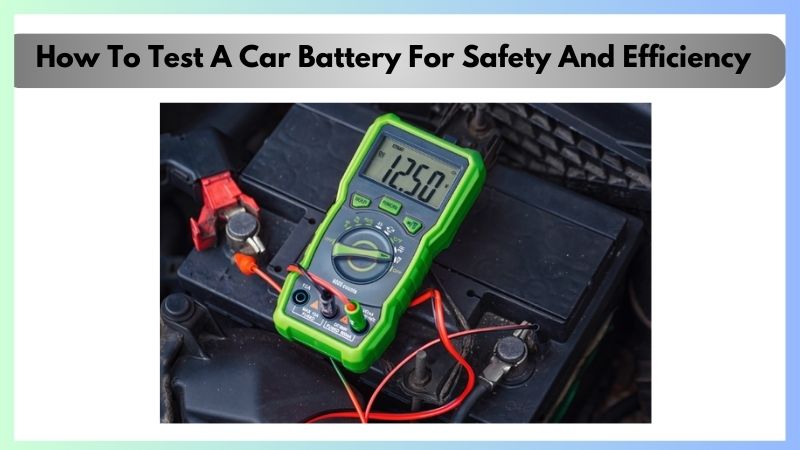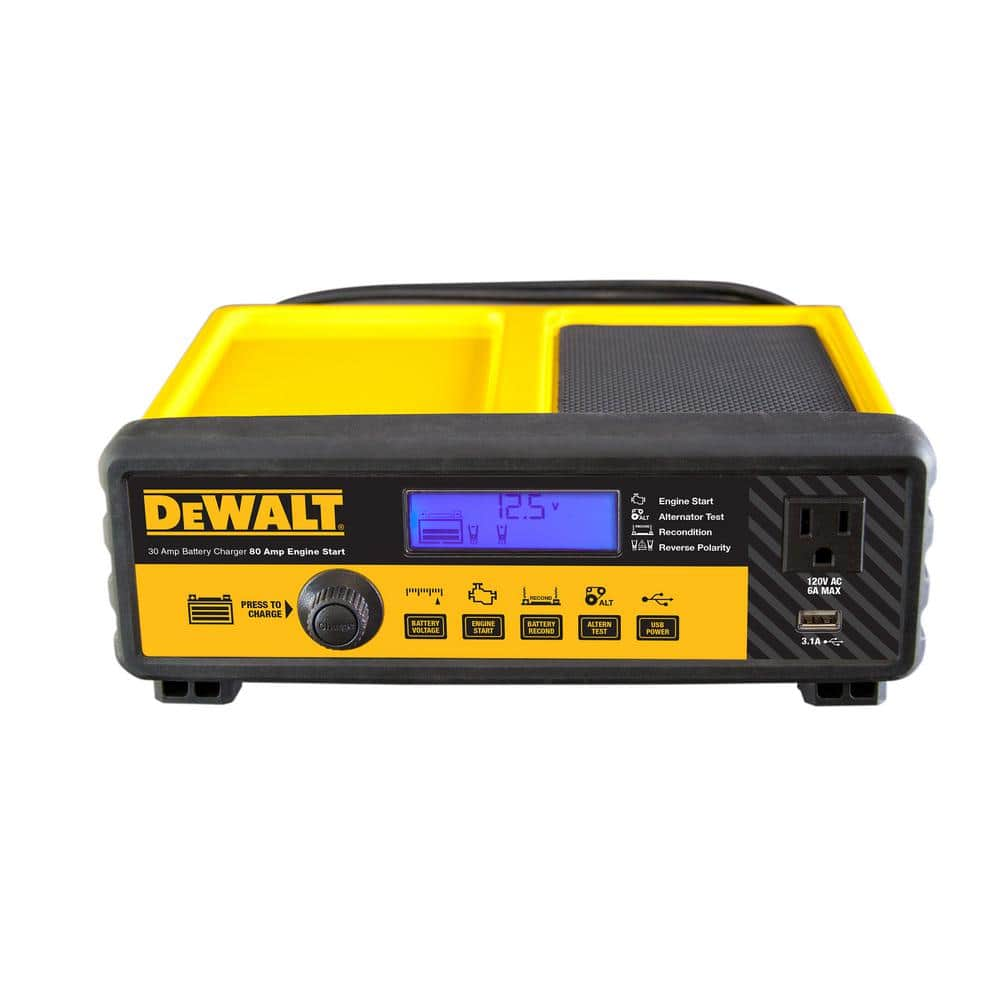How to Test a Battery Charger Without a Battery
To test a battery charger without a battery, use a multimeter to check the voltage output. This helps ensure the charger is functioning correctly.
Ensuring your battery charger is in good working condition is essential for maintaining the longevity of your batteries. By following simple steps, you can test your battery charger to verify its functionality even without a battery. Checking the voltage output using a multimeter will give you a clear indication of whether the charger is providing the correct power levels.
This process is crucial in preventing any damage to your batteries and ensuring efficient charging performance. Proper maintenance of your battery charger will help extend the lifespan of both your charger and batteries.

Credit: www.electronicshub.org
Why Test A Battery Charger Without A Battery
Why Test a Battery Charger Without a Battery
Testing a battery charger without a battery is crucial to ensure it is working efficiently and safely. By doing this, you can identify any potential issues with the charger before connecting it to a valuable battery, preventing damage to the battery or charger. Testing the charger also allows you to verify its voltage output and functionality, which is essential for maintaining the longevity of your batteries and ensuring consistent power delivery.
Identifying A Faulty Battery Charger
There are several methods to identify a faulty battery charger without using a battery. One way is to use a multimeter to check the charger’s voltage output. Another method involves visually inspecting the charger for any signs of damage or wear. Additionally, you can perform a continuity test to check for any breaks in the charger’s circuitry. These steps can help pinpoint any potential issues with the charger before it is connected to a battery, ensuring the safety of both the charger and the battery.
Safety Precautions
- When testing a battery charger without a battery, always wear appropriate protective gear, such as gloves and safety glasses, to prevent any potential electrical hazards.
- Ensure the charger is unplugged from the power source before conducting any tests to avoid the risk of electric shock.
- Inspect the charger’s cables and connections for any signs of fraying or damage, and replace them if necessary to avoid any safety hazards during testing.
- Avoid exposing the charger to water or extreme temperatures, as this can cause damage to the charger and pose a safety risk during testing.

Credit: www.wikihow.com
Methods To Test A Battery Charger Without A Battery
When examining your battery charger without a battery, there are a few methods that you can employ to ensure it is working efficiently. These methods can help you determine the charger’s functionality and identify any potential issues.
Begin by conducting a visual inspection of the battery charger. Check for any visible damage, loose connections, or burnt components.
Next, measure the charger’s voltage output using a multimeter to ensure it matches the specified rating. Compare the reading against the charger’s manual.
Utilize a multimeter to test the charger’s functionality by checking the continuity of the circuits. Probe the terminals to verify the flow of electricity.
Visual Inspection
Before testing a battery charger without a battery, start with a visual inspection to ensure safety and proper functioning.
Inspecting The Charger For Physical Damage
- Look for cracks, dents, or discolored areas on the charger body.
- Check for burn marks or signs of overheating on the surface.
Checking For Loose Connections Or Frayed Wires
- Examine the power cord for any exposed wires or damage.
- Inspect the connector ports for any loose connections or corrosion.
If any issues are found during the visual inspection, do not proceed to testing and consider repairing or replacing the charger before further use.
Checking Voltage Output
Checking the voltage output of a battery charger is a crucial step in determining its functionality. By following a few simple steps, you can test a battery charger without a battery to ensure it is working properly. One of the key aspects of this process is measuring the voltage output, which involves using a voltmeter to determine the charger’s output and comparing it to the manufacturer’s specifications.
Using A Voltmeter To Measure Voltage Output
One way to test the voltage output of a battery charger is by using a voltmeter. A voltmeter is a device that measures voltage, and it can be used to check the output of the charger. To do this, set the voltmeter to measure DC voltage and connect the positive lead to the positive terminal of the charger and the negative lead to the negative terminal. Once connected, the voltmeter will display the charger’s output voltage.
Comparing Measured Voltage With Charger Specifications
After measuring the voltage output, it’s important to compare the measured voltage with the charger’s specifications. These specifications can usually be found in the charger’s manual or on the manufacturer’s website. Compare the measured voltage with the specified voltage range to ensure the charger is operating within the expected parameters. If the measured voltage deviates significantly from the specifications, it may indicate a problem with the charger’s functionality.
Using A Multimeter
When it comes to testing a battery charger without a battery, one of the most effective methods is using a multimeter. A multimeter is a handy device that can measure voltage, continuity, and resistance, making it the perfect tool for this task. In this section, we will explore how to use a multimeter to test the voltage of a battery charger and check for proper continuity.
Testing The Charger’s Voltage With A Multimeter
To begin, you will need a multimeter with voltage measuring capabilities. Here’s a step-by-step guide to testing the charger’s voltage:
- Step 1: Set the multimeter to measure DC voltage.
- Step 2: Connect the red probe to the charger’s positive terminal and the black probe to the negative terminal.
- Step 3: Turn on the multimeter and observe the voltage reading.
If the charger is functioning properly, the voltage reading should match the voltage labeled on the charger. For example, if the charger is rated for 12 volts, the multimeter should display a voltage close to 12 volts. If the reading is significantly lower or higher than the rated voltage, there may be an issue with the charger.
Checking For Proper Continuity
Continuity refers to the uninterrupted flow of electrical current in a circuit. To check for proper continuity in a battery charger, follow these steps:
- Step 1: Set the multimeter to measure continuity (the continuity symbol on the multimeter is usually represented by a sound wave).
- Step 2: Connect the red probe to one end of the charger’s output terminal and the black probe to the other end.
- Step 3: Listen for a continuous beep or observe the continuity indicator on the multimeter.
If you hear a continuous beep or see the continuity indicator light up, it means there is proper continuity in the charger’s circuit. This indicates that the charger’s cables and connections are in good condition. However, if there is no beep or the indicator does not light up, there may be a break in the circuit, and further inspection or repair is necessary.

Credit: www.homedepot.com
Frequently Asked Questions For How To Test A Battery Charger Without A Battery
How Can I Test My Battery Charger?
To test your battery charger, plug it into a known working socket and connect it to a compatible battery. Observe if the charger functions and charges the battery properly. Check the charging indicator, voltage output, and charging time to ensure proper functionality.
How Can You Tell If A Battery Charger Is No Good?
A battery charger is no good if it doesn’t charge the battery or overheats. Also, check for frayed cords and loose connections.
Will A Battery Charger Work On A Dead Battery?
Yes, a battery charger can work on a dead battery by providing the necessary electrical charge for recharging.
How Do You Pat Test A Battery Charger?
To pat test a battery charger, visually check for any damages or frayed wires. Use a portable appliance tester to verify electrical safety compliance.
How Can You Test A Battery Charger Without A Battery?
To test a battery charger without a battery, you can use a multimeter to measure the voltage output.
What Should You Do Before Testing A Battery Charger?
Before testing a battery charger, ensure it is turned off and unplugged to avoid any electrical hazards.
Can You Test A Battery Charger With A Voltmeter?
Yes, you can test a battery charger with a voltmeter by checking the voltage output to ensure it is within the correct range.
Conclusion
In this blog post, we’ve covered various methods to appropriately test a battery charger without using a battery. By following these simple techniques, you can ensure the proper functioning of your battery charger and avoid potential issues. Remember to prioritize safety and adhere to the manufacturer’s guidelines for the best outcomes.
With these insights, you can confidently conduct battery charger tests with ease.


